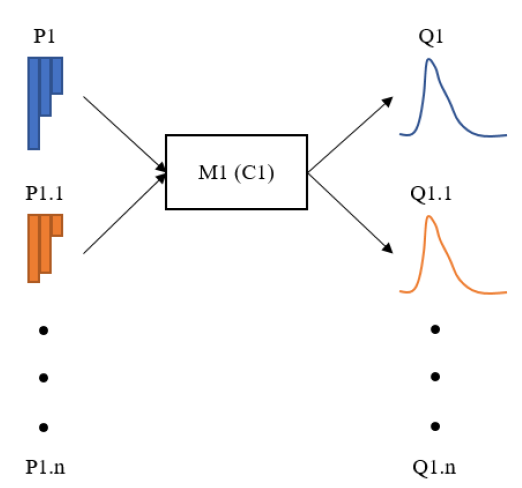Towards repeatable catchment experiments: Influence of hydro-meteorological variables on the runoff response at the catchment scale
SUPERVISOR: Christine STUMPP
PROJECT ASSIGNED TO: Adriane HÖVEL
Runoff reactions at the catchment scale are highly variable in space and time. Hydrological process-understanding within a catchment is therefore of crucial importance to implement measures for e.g., water resources management. However, effects of individual variables influencing the rainfall-runoff process can hardly be separated due to their complex interaction. Thus, in our approach, we aim to investigate a catchment in time to find reoccurring hydrological patterns of e.g., rainfall. These "repeated experiments” have the potential to isolate the effect of individual variables on the rainfall-runoff process. At the catchment scale, repeated experiments have only been conducted in small quantities by e.g., Lynch (1967), however, limited to an 8-ha site, or Blöschl et al. (2016), who performed experiments in a 66-ha catchment in Austria.
In a synthetically-based modeling approach, hydrologic similarity will be defined by determining reoccurring patterns in runoff responses to investigate their corresponding rainfall events and catchment wetness, namely soil water content and groundwater. For this purpose, various combinations of precipitation input, model structures and initial conditions will be used to repeatedly simulate runoff with the help of hydrological models (Figure 1).

Figure 1: Precipitation inputs P1 to P1.n serve as input for a hydrological model M1 with catchment conditions C1 leading to simulated runoff Q1 to Q1.n (Stockinger 2019)
In a next step, hydrologically similar rainfall and wetness patterns will be searched in real-world data of three study catchments with various land uses: a) Wüstebach, Germany (forest) b) Rollesbroich, Germany (grassland) c) Petzenkirchen, Austria (agriculture). Lastly, the catchments’ hydrologic response times will be calculated for each hydrologically similar pattern. Based on the preceding analysis, the influence of hydro-meteorological variables on the hydrologic response time in the catchments will be determined.
Conducting repeated catchment experiments in the real world is nearly impossible due to financial, administrative, and technological constraints. With the presented novel methodology of searching for similar hydrologic conditions of a catchment at different points in time and investigating corresponding runoff reactions, our understanding of influential hydro-meteorological variables can be enhanced. Hence, in terms of the four HR21 Research Clusters, the project can mainly be allocated to the “Connectivity” cluster, in this case related to a deeper understanding of the rainfall-runoff process.
The project is funded by the Austrian Science Fund (FWF) and is conducted at the Institute for Soil Physics and Rural Water Management at BOKU. Further cooperation partners will include Vienna University of Technology (Austria), Delft University of Technology (The Netherlands) and Forschungszentrum Jülich GmbH (Germany).
Blöschl, G., Blaschke, A.P., Broer, M., Bucher, C., Carr, G., Chen, X., Eder, A., Exner-Kittridge, M., Farnleitner, A., Flores-Orozco, A., Haas, P., Hogan, P., Kazemi Amiri, A., Oismüller, M.,
Parajka, J., Silasari, R., Stadler, P., Strauss, P., Vreugdenhil, M., Wagner, W., Zessner, M.,
2016. The Hydrological Open Air Laboratory (HOAL) in Petzenkirchen: A hypothesis- driven observatory. Hydrol. Earth Syst. Sci. doi.org/10.5194/hess-20-227-2016
Lynch, J., 1976. Effects of Antecedent Soil Moisture on Storm Hydrographs. Ph. D. thesis, Penn.
State Univ.
Stockinger, M., 2019. Towards repeatable catchment experiments. Project proposal, University of Natural Resources and Life Sciences, Vienna.
